Eight Bells: Mark Lindsay
Published on September 9th, 2019
Few people touched the full range of the sport as Mark Lindsay, 75, who passed away unexpectedly on September 6 in Gloucester, MA. From dinghies to keelboats, from powerboats to America’s Cup boats, Mark was a high-tech boat-building pioneer. Here Mark tells his story:
My childhood summers were spent in a small town on the coast of Connecticut. Although the town beach attracted the crowds, the best-kept secret was in an old weathered boat shop at the foot of Waterside Lane.
I spent hours there, watching the local lobster boats take shape under the practiced eye and knowing hands of a septuagenarian craftsman who worked the oak and cedar with little more than a half model to guide him. The process that brought all the pieces together to create the flowing lines of sea-kindly hulls fascinated me. It was the innocent beginning of a lifelong passion.
At 14 my father helped me buy a kit to build my first boat, a Sailfish. His enjoyment in helping me as we drilled and set the bronze screws in the mahogany, planed and sanded, taught me the value of putting your energy into something you love. I also learned how much fun it is to share that process with others who are just as excited as you are.
Two summers later, away from home and working at my first job on Cape Cod, that Sailfish won a season championship for me, and I was hooked on learning what makes boats go faster.
I left college in the middle of my sophomore year to build boats, and landed a job in Marblehead at the yard where the 12 Metres Nefertiti and Easterner were being fitted out for the America’s Cup.
On my first day at work, in the depths of a New England winter, they handed me a pickaxe and shovel and said, “Dig a ditch three feet deep from this shed to that one and come back when you’re done.” After that I was assigned to building fiberglass Formula V race car bodies, in a cramped corner under the eaves of the lofting floor. I was beginning to learn there is a lot of hard work in boat building.
Back at college a year later, I studied architecture at the University of Pennsylvania and then architecture and architectural engineering at MIT. The structures classes opened my mind to the important distinctions between stiffness and strength, and the materials testing lab provided a fascinating opportunity to load the structures and watch how they failed.
I also found myself inevitably drawn to the MIT Sailing Pavilion where the Charles River was a test tank for all our ideas on what makes boats go faster.
The next diversion in my education was several years of building Olympic Class Star boats with World Champion Joe Duplin. Joe has always loved the cross-fertilization of ideas in completely diverse areas like hydrodynamics, sports psychology, and materials technology.
Our coffee breaks were like graduate seminars as we stretched our minds to encompass Joe’s images such as, “If I were a water molecule.” In that shop we built our first epoxy boat 30 years ago, and the exceptional strength and weight characteristics were immediately obvious.
In the early ’70s, Dick Carter’s yacht design office north of Boston attracted an eclectic group of international clients and young designers. When the future America’s Cup designer Doug Petersen left Carter’s office to start his own business, I brashly applied for the job and won it.
I shared an office with Carter’s computer expert, Chuck Paine, and soon afterward we hired another young aspiring designer, Bob Perry, who had a few years previously given up a career as a rock musician.
At the time I was racing sailboats in the very lightweight and overpowered International 505 class. The contrast between the high-performance composite construction of those sailing dinghies and the typical aluminum or wood construction of offshore racing boats lead me to wonder if boats could be built even lighter, stronger and, therefore, faster.
I found a chance to test out those ideas when the Carter yacht design staff was laid off in the winter of 1975, and a friend asked me to build him a sailboat to compete in a World Championship. I rented a loft in a barn on Boston’s North Shore, and designed and built an International Fireball Class sailboat, the first of many launchings for Mark Lindsay Boatbuilders, Ltd.
That summer Joan and Art Ellis took the boat to France and our first boat won. As skipper, Joan became the first woman to win a double-handed Worlds, and the first American in this class.
With its unique structural design, the boat was able to carry much higher rig tension giving better sail shape control. We kept the boat exceptionally light by using aircraft plywood. Puzzled by the boat’s speed, the class measurers even drilled exploratory holes in the hull to try to uncover its secrets.
The following year Steve Benjamin took his new boat from our shop to win the World Championship in Canada.
We turned next to a class that attracted many of the best sailors in the world, the International 505. It was firmly believed that after these lightweight, 16-foot dinghies were more than a year old, they would begin to break down and become uncompetitive. Many of the winning boats were as much as 10% over the minimum weight in an attempt to keep them from falling apart.
We changed the materials and construction process to use vacuum-bagged epoxy, carbon-fiber and Kevlar with Nomex honeycomb cores. Our 505 hulls were dramatically lighter, both stiffer and stronger, and provided World Championship wins for Steve Taylor, Steve Benjamin, Gary Knapp and Cam Lewis. One of my great thrills was winning a North American Championship among that crowd. Twenty-five years later, many of these same boats are still winning.
When two of our 505 owners decided to campaign for the Olympics in the Flying Dutchman, they asked us to design and build the fastest possible boats for them. The prototypes were built with the same carbon, Kevlar, honeycomb, and epoxy technology of the 505s, but it was clear that we could push the technology further.
In the early 1980s, we proposed and won a grant from the U.S. Olympic Committee to design and build a high-temperature-cured, pre-impregnated epoxy Flying Dutchman. With technological support from Sikorsky Aircraft, DuPont, and Hexcel Corporations, and our own hull design and structural engineering, we were able to build the hulls for this 20-foot boat that weighed in at 75 pounds and decks at only 25 pounds.
In 1984, Jonathon McKee and Carl Buchan sailed our boat to the United States first Flying Dutchman World Championship and Olympic Gold Medal. The Lindsay Flying Dutchman became a world standard and sailors came from Europe, South America, Asia, and Australia to purchase the magic boat speed.
Yacht designer Bruce Farr came to us with a design for a 38-foot Lake Garda racer for a Swiss customer. The laminate was the same Kevlar and honeycomb as our 20-foot Flying Dutchman which had been rejected as unworkable by several European builders.
Only five feet wide at the waterline, 16 feet wide on deck and with a towering 45-foot mast, the boat weighed only 2,000 pounds and carried seven crew on trapezes. Launched the day before the first race, this lightweight flyer bested the other 500 boats in the 100-mile race up and back the length of Switzerland’s Lake Geneva, beating multihulls and boats half again her size.
In the early 1980s, Lindsay Boatbuilders began building ocean racers, starting with MORC and IOR boats. Our first keel boat, a Graham and Schlageter 27 won the MORC Internationals. More orders followed and the boats grew in size. In the late ’80s, the IMS rule gave a new opportunity to use our vacuum-bagged epoxy Kevlar construction with the Taylor 40. These boats combined the technology of the latest racing designs with a layout and sail control systems that were easy for the crews of families and friends who sailed the boats.
The Taylor 40 gave several local sailing teams their first successes at the national level, with one overseas boat winning the Japan Cup for its new owner. In 1992 our recently launched Schumacher 40 fulfilled her owner’s dreams by winning her class in the Bermuda Race. I was privileged to join owner Shep Poor and designer Carl Schumacher on that long thrash to weather in the rain that left us with several sea stories and some great memories.
Over the years, many young and old sailors developed an affinity for Lindsay rudders. From Optimist prams to Dennis Conner’s America’s Cup boats, these foils had developed a mystique for successful performance.
In preparation for the 1992 America’s Cup, we were invited to build the rudders for Bill Koch’s America 3 team and to bring our boatbuilding expertise to Hercules Aerospace for the construction of their first hull.
I took a team to Hercules in Utah for two and half months where we helped build the radical autoclaved and glued construction carbon and honeycomb AC boat “Jayhawk”. Later we took another team to Detroit and set up a prepreg carbon mast building shop to assemble the America 3 spars. Back in Massachusetts we built more rudders and mast components. It was a thrill to see them on the winning boat in the 1992 America’s Cup.
Our next undertaking was a series of Bruce Farr designed lightweight IMS racing boats. The Farr 39 ML was built to order for a select group of owners who came from such diverse sailing areas as the East Coast, Great Lakes, Europe, and Japan.
These boats won the Japan Cup, the King’s Cup in Palma de Majorca, Antigua, Block Island and Key West. Their lightweight cored epoxy glass and Kevlar hulls were also subjected to the test of many miles of ocean passages, including one reported peak speed of 30 knots while fleeing the leading edge of a hurricane.
In 1996 I joined Scott Smith in forming the new venture, Boston BoatWorks, at the site of the former Bethlehem Steel Shipyard in Boston, MA. We were very excited to be bringing boatbuilding back to the East Boston waterfront where Donald McKay had built and launched his famous clipper ships such as the Flying Cloud.
In addition to our custom IMS ocean racers, we began using the same pre-impregnated epoxy construction to build both power and performance-oriented cruising boats.
Hydra Powerboats had built a reputation for racing catamarans and asked us to build molds, hulls and decks for their new 50-knot production boat. Vacuum-bagged in cored Kevlar and epoxy, these boats were employed for such diverse uses as sport fishing and high-speed shuttle service on the Panama Canal. Engineering the construction for unusually light weight and high speed was a fascinating challenge.
Designer Chuck Paine had stayed in touch over the years since we shared an office at Dick Carter’s in the ’70s, and brought us an opportunity to build the hull and deck for a custom Kevlar/epoxy 47-foot sailing cruising yacht with interior and fit-out to be completed by Morris Yachts in Maine. This lovely pilothouse design based on an IMS racing hull shape, was the first of several of Paine yachts, up to 62 feet in length, which we built this way.
These projects lead to our building the Boston BoatWorks 46, a Chuck Paine pilothouse performance cruiser for a customer from Seattle, WA. We constructed “Lustrous” for self-sufficient world cruising or exploration of the Pacific Northwest, with a finely detailed varnished cherry interior, a full complement of systems, carbon spars and gleaming custom finish. It was hard to part with her when we were finished.
Our latest project with MJM Yachts is the realization of a longtime dream. I first met Bob Johnstone at a 505 regatta in the early ’70s. We have always appreciated each other’s work and I am delighted at this opportunity to work with such a creative contributor to the profession and to the enjoyment of boating. And when I can’t wait to get to work in the morning, I know I have chosen the right occupation.
A celebration of his life will be held on Saturday, September 21, from 12 – 3 at the Shalin Liu Performance Center, Rockport, MA. Contributions in his memory may be made to Courageous Sailing, Charlestown, MA. www.courageoussailing.org


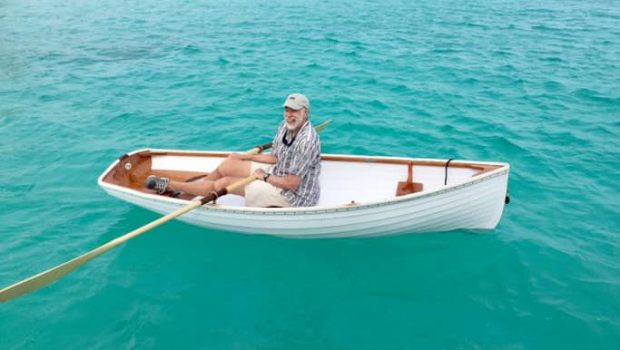
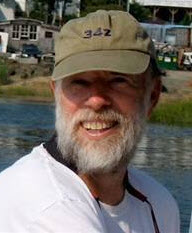


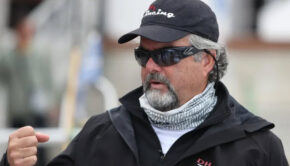
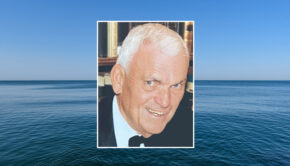
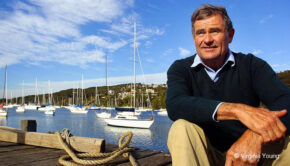
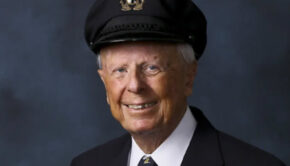
 We’ll keep your information safe.
We’ll keep your information safe.